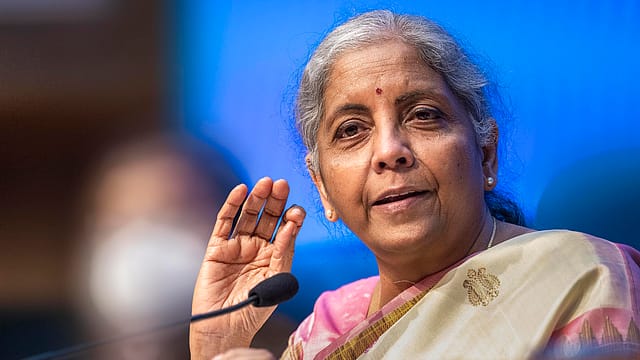Govt, RBI closely monitoring rupee, says FM
ADVERTISEMENT

Finance minister Nirmala Sitharaman, answering a question on the sliding value of the rupee against the U.S. dollar in Rajya Sabha, says both the government and the Reserve Bank closely monitor developments in the exchange rate of the rupee and mark macroeconomic policies.
The domestic currency has recovered from its all-time low of ₹80 to one U.S. dollar, a key psychological mark that was touched on July 11, 2022, to ₹78.6 currently.
On the government's plans to strengthen the value of the rupee in the international markets, the FM says though the exchange rate of the rupee is determined largely by the market forces of demand and supply, the apex bank intervenes only to curb excessive volatility in the foreign exchange market and to maintain orderly conditions. However, she says, it does not target any specific level of the exchange rate.
Explaining the reasons behind the rupee depreciation, minister of state for finance Pankaj Chaudhary says in the Rajya Sabha that global factors such as the Russia-Ukraine war, soaring crude oil prices and tightening of global financial conditions cause the rupee depreciation against the U.S. dollar. The other factor attributed to the rupee depreciation is the foreign portfolio investment outflow from the equity markets in FY23.
January 2026
Netflix, which has been in India for a decade, has successfully struck a balance between high-class premium content and pricing that attracts a range of customers. Find out how the U.S. streaming giant evolved in India, plus an exclusive interview with CEO Ted Sarandos. Also read about the Best Investments for 2026, and how rising growth and easing inflation will come in handy for finance minister Nirmala Sitharaman as she prepares Budget 2026.
The continuous rupee devaluation led to a drop in India’s foreign exchange reserves. The forex reserves stood at $606.48 billion as of April 1, 2022, while they dipped to $580.25 billion as of July 8, 2022, says the junior minister.
At the time, says the minister, the rupee has strengthened against major currencies like British Pound, Japanese Yen and Euro.
He says the monthly average exchange rate of the Indian rupee against the U.S. dollar stood at ₹76.17 per U.S. dollar in April 2022, depreciated to ₹77.32 per dollar in May 2022 and further to ₹78.07 a dollar in June 2022.
On the RBI allowing Indian importers and exporters to do international trade in Indian rupees, MoS finance Bhagwat Karad says it'll promote the growth of global trade. The emphasis, he says, will be on exports from India. The move will also support the increasing interest of the global trading community in the rupee.
The RBI put in place the arrangement for invoicing, payment, and settlement of exports or imports in the rupee on July 11, 2022. The broad framework for cross-border trade transactions in rupee says all exports and imports may be denominated and invoiced in rupee. The exchange rate between the currencies of the two trading partner countries may be market determined.
Notably, the RBI last month took a series of measures to reverse the rupee plunge. Firstly, it exempted incremental foreign currency non-resident (bank) (FCNR(B) and non-resident (external) (NRE) rupee deposits from the maintenance of Cash Reserve Ratio and Statutory Liquidity Ratio up to November 4, 2022. It exempted fresh FCNR(B) and NRE deposits from the extant regulation on interest rates to allow banks to provide higher interest rates till October 31, 2022, than those offered to comparable domestic rupee term deposits. This was done to attract foreign currency deposits.
The RBI revised the regulatory regime on foreign portfolio investment in debt flows to encourage foreign investment in Indian debt instruments. The RBI also raised the external commercial borrowing limit (under automatic route) to $1.5 billion and the all-in-cost ceiling by 100 bps in select cases up to December 31, 2022.
